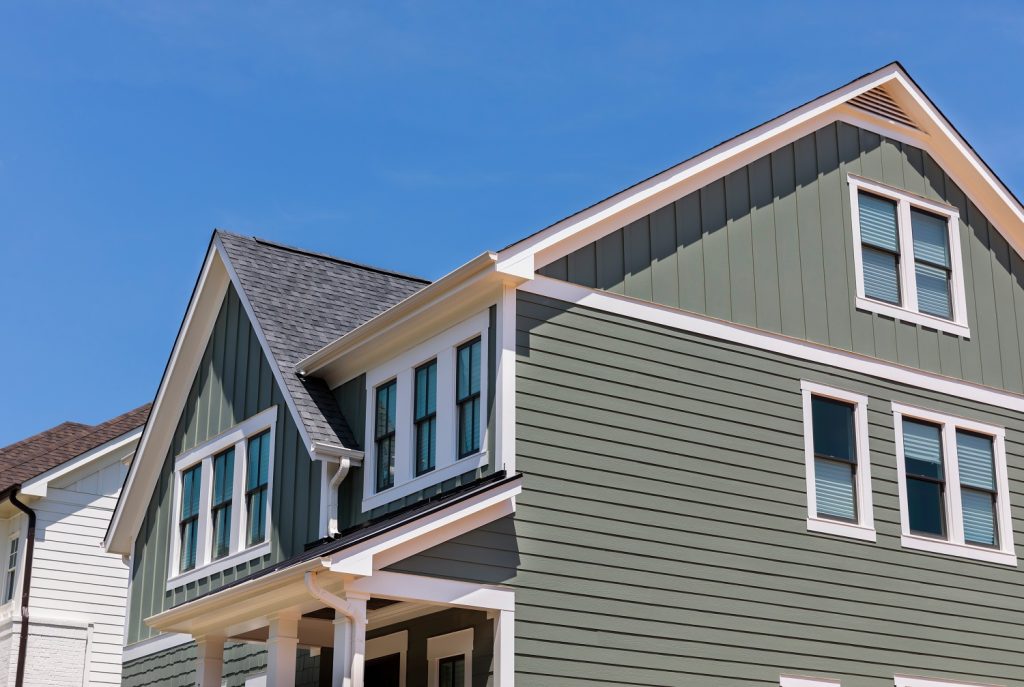
Vinyl siding has become a popular choice for homeowners looking to enhance the exterior of their homes. Vinyl siding offers numerous benefits with its affordability, durability, and low maintenance requirements. However, like any other siding material, vinyl has its own pros and cons. In this comprehensive guide, we will explore the advantages and disadvantages of vinyl siding, provide tips on installing and maintaining it, and address common concerns.
Whether you’re considering vinyl siding for a new construction project or replacing the existing siding on your home, this guide will help you make an informed decision.
What is Vinyl Siding?
Vinyl siding is a type of cladding material made from polyvinyl chloride (PVC). It is designed to be installed on the exterior walls of residential and commercial buildings. Vinyl siding is available in a variety of colors, textures, and styles, allowing homeowners to achieve the desired aesthetic for their homes. It is a popular choice due to its affordability, low maintenance requirements, and durability.
Vinyl siding first hit the market in the 1950s as an alternative to traditional wood siding. It quickly gained popularity due to its cost-effectiveness and ease of installation. Over the years, advancements in technology have improved the quality and appearance of vinyl siding. Modern vinyl siding can mimic the look of wood, stone, or other materials, offering homeowners a wide range of design options.
Pros of Vinyl Siding
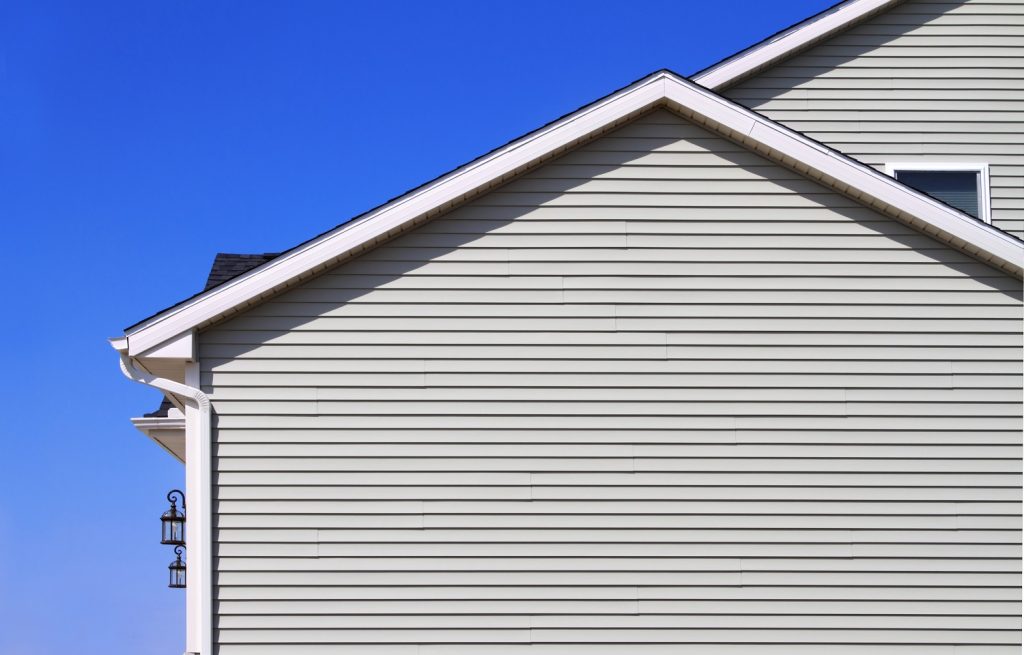
Vinyl siding offers several advantages that make it an attractive choice for homeowners. Let’s explore the pros of vinyl siding in detail:
Low Maintenance
One of the best things about vinyl flooring is that it doesn’t need much upkeep. Unlike wood siding, vinyl does not require painting or staining. The color is infused into the material during the manufacturing process, so it will not chip, peel, or fade. To keep vinyl siding looking its best, occasional cleaning with mild detergent and water is all needed.
Durability
Vinyl siding is known for its durability. It can stand up to bad weather like high winds, heavy rain, and very cold or very hot temperatures. High-quality vinyl siding is resistant to cracking, warping, and fading, ensuring that it will maintain its appearance for many years. Additionally, vinyl siding is resistant to pests, such as termites, that can cause damage to other types of siding materials.
Cost-Effectiveness
Vinyl siding is an affordable option compared to other siding materials like wood or fiber cement. The cost of vinyl siding varies depending on factors such as the quality of the material and the size of the project. However, in general, vinyl siding is a cost-effective choice for homeowners looking to enhance the exterior of their homes without breaking the bank.
Versatility in Design
Vinyl siding comes in a wide range of colors, textures, and styles, allowing homeowners to achieve their desired aesthetic. Whether you prefer a traditional look or a more modern design, there is a vinyl siding option to suit your taste. Some vinyl siding even mimics the look of wood, offering the warmth and charm of natural materials without the maintenance requirements.
Energy Efficiency
Adding vinyl flooring to your home can help it use less energy. Insulated vinyl siding is available, which provides an additional layer of insulation to your walls. This can help reduce heat loss in the winter and heat gain in the summer, resulting in lower energy bills. Insulated vinyl siding can also help dampen outside noise, creating a quieter and more comfortable living environment.
Cons of Vinyl Siding
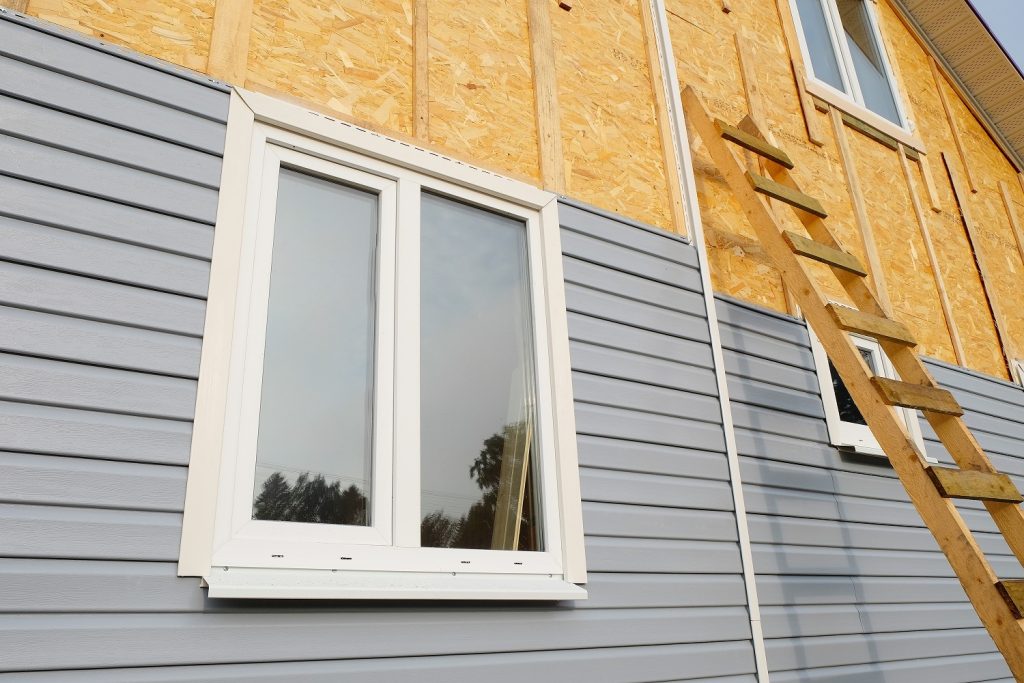
While vinyl siding offers numerous benefits, there are a few drawbacks to consider. Let’s discuss the cons of vinyl siding:
Environmental Impact
Vinyl siding is made from PVC, a synthetic material derived from fossil fuels. The manufacturing process of PVC releases greenhouse gases and other pollutants into the environment. Additionally, vinyl siding is not biodegradable and can contribute to landfill waste at the end of its lifespan. If environmental sustainability is a priority for you, you may want to explore alternative siding materials.
Potential for Moisture Problems
Improper installation or maintenance of vinyl siding can lead to moisture problems. If water becomes trapped between the siding and the wall, it can cause rot, mold, and other issues.
Durability
It is Improper installation or maintenance of vinyl siding can lead to moisture problems. If water becomes trapped between the siding and the wall, it can cause rot, mold, and other issues. It is essential to ensure proper installation techniques, including using a moisture barrier and proper sealing around windows and doors, to prevent moisture-related problems.
Limited Lifespan
While vinyl siding is durable, it has a limited lifespan compared to other siding materials. On average, vinyl siding can last between 20 to 40 years, depending on various factors such as climate, maintenance, and material quality. Over time, vinyl siding may fade or become brittle, requiring replacement to maintain the appearance and integrity of your home’s exterior.
Color Fading
Although vinyl siding is resistant to fading, prolonged exposure to sunlight can cause some color fading over time. The extent of fading will depend on factors such as the quality of the siding and the climate in which it is installed. If color retention is a priority for you, consider choosing high-quality vinyl siding with UV-resistant coatings.
Difficulty in Replacing Damaged Panels
If a vinyl siding panel becomes damaged or needs to be replaced, it can be challenging to match the color and texture of the existing siding. Over time, the colors of vinyl siding panels may fade at different rates, making it difficult to find an exact match for a replacement panel. This can result in a patchwork appearance on your home’s exterior.
How to Install Vinyl Siding
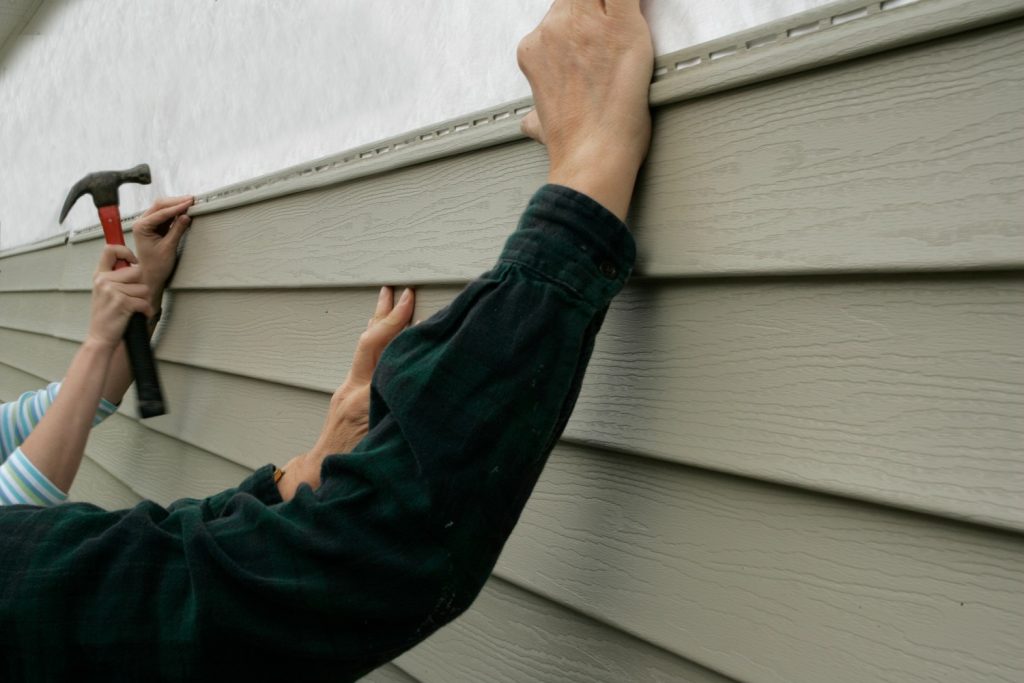
Installing vinyl siding can be a DIY project for homeowners comfortable with basic construction tasks. However, it is recommended to hire a professional if you need clarification on the process. Here are the steps involved in installing vinyl siding:
Pre-Installation Preparation
Before installing vinyl siding, it is important to prepare the exterior walls of your home. This includes removing existing siding, repairing damaged areas, and ensuring a smooth and level surface for the vinyl siding installation.
Tools and Materials Needed
To install vinyl siding, you will need the following tools and materials:
- Vinyl siding panels
- Starter strips
- J-channel
- Corner posts
- Utility knife
- Tin snips
- Level
- Tape measure
- Nails or screws
- Power saw or vinyl siding cutter
- Caulk and caulk gun
Step-by-Step Installation Process
- Install the starter strip at the base of the wall to provide a secure base for the first row of siding panels.
- Install J-channel around windows and doors to create a finished look and provide a channel for the siding panels to fit into.
- Begin installing the first row of siding panels, starting from one corner of the wall. Slide each panel into the starter strip and secure it with nails or screws.
- Continue installing the siding panels, overlapping each panel slightly to ensure a tight fit and proper water resistance.
- Cut the siding panels as needed to fit around windows, doors, and other obstacles using a power saw or vinyl siding cutter.
- Install corner posts at the corners of the wall to provide a finished look and secure the siding panels in place.
- Install J-channel and trim pieces around windows, doors, and other openings to create a clean and finished appearance.
- Complete the installation by installing the top row of siding panels and any additional trim pieces or accessories.
Tips for a Successful Installation
- Follow the manufacturer’s instructions for installation to ensure proper technique and best results.
- Take accurate measurements and cut the siding panels carefully to ensure a precise fit.
- Use a level to ensure that the siding panels are installed straight and level.
- Leave a small gap between the siding panels and the trim pieces to allow for expansion and contraction in changing weather conditions.
- Use caulk to seal any gaps or joints in the siding to prevent water infiltration.
Maintaining Vinyl Siding
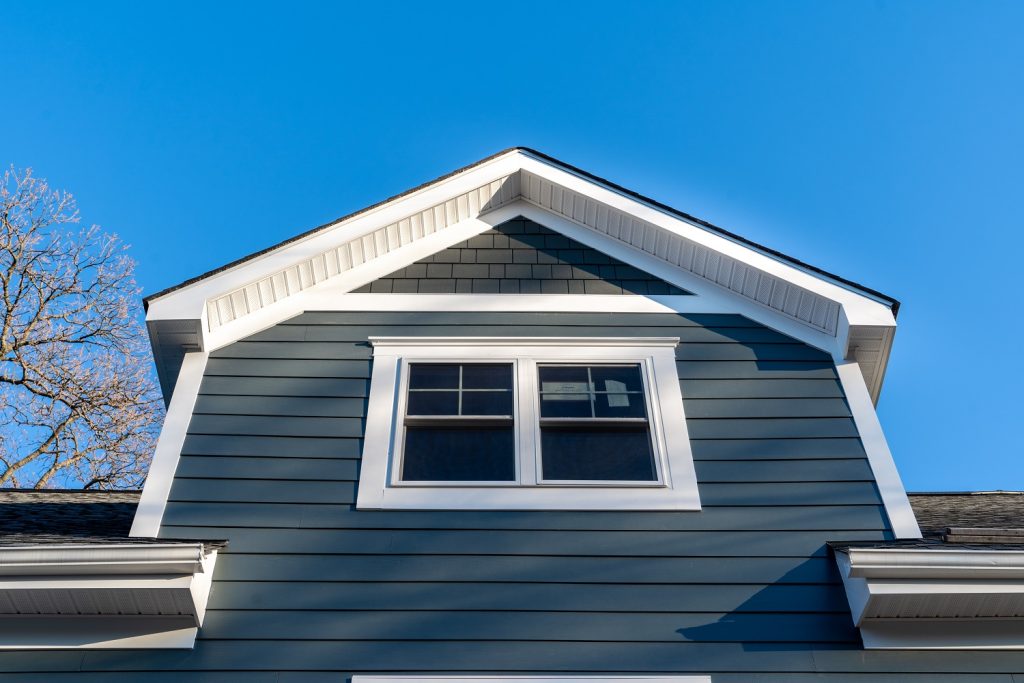
People like vinyl flooring because it doesn’t need much upkeep. However, some basic cleaning and occasional repairs may be necessary to keep your vinyl siding looking its best. Here are some maintenance tips for vinyl siding:
Regular Cleaning
To keep your vinyl siding looking clean and fresh, it is recommended to clean it at least once a year. You can use a soft-bristle brush or a pressure washer on a low setting to remove dirt, grime, and mildew. Avoid using harsh chemicals or abrasive cleaners, as they can damage the surface of the siding.
Painting Vinyl Siding: Pros and Cons
While vinyl siding is designed to be maintenance-free, some homeowners choose to paint their vinyl siding to change the color or refresh the appearance. A cheap way to make your home look newer is to paint the vinyl flooring. But there are pros and cons to think about.
Pros of painting vinyl siding:
- Allows for customization and color change
- Can extend the lifespan of older vinyl siding
- It provides added protection against UV rays
Cons of painting vinyl siding:
- May void the manufacturer’s warranty
- Requires proper surface preparation and priming
- It can be challenging to achieve a smooth, even finish
Before painting your vinyl siding, it is recommended to consult with a professional painter to ensure proper preparation and application techniques.
Repairing Damaged Siding
If your vinyl siding becomes damaged, it is important to address the issue promptly to prevent further damage and maintain the integrity of your home’s exterior. A vinyl patching kit or caulk can repair small cracks or holes. Larger areas of damage may require the replacement of the affected siding panels. It is best to consult with a professional siding contractor for larger repairs to ensure a seamless and durable repair.
Preventing and Addressing Moisture Issues
Proper installation and maintenance are key to preventing moisture-related problems with vinyl siding. Ensure the siding is properly sealed around windows, doors, and other openings to prevent water infiltration. Regularly inspect your siding for signs of moisture damage, such as mold, mildew, or rot. If you notice any issues, consult a professional to address the problem and prevent further damage.
Frequently Asked Questions
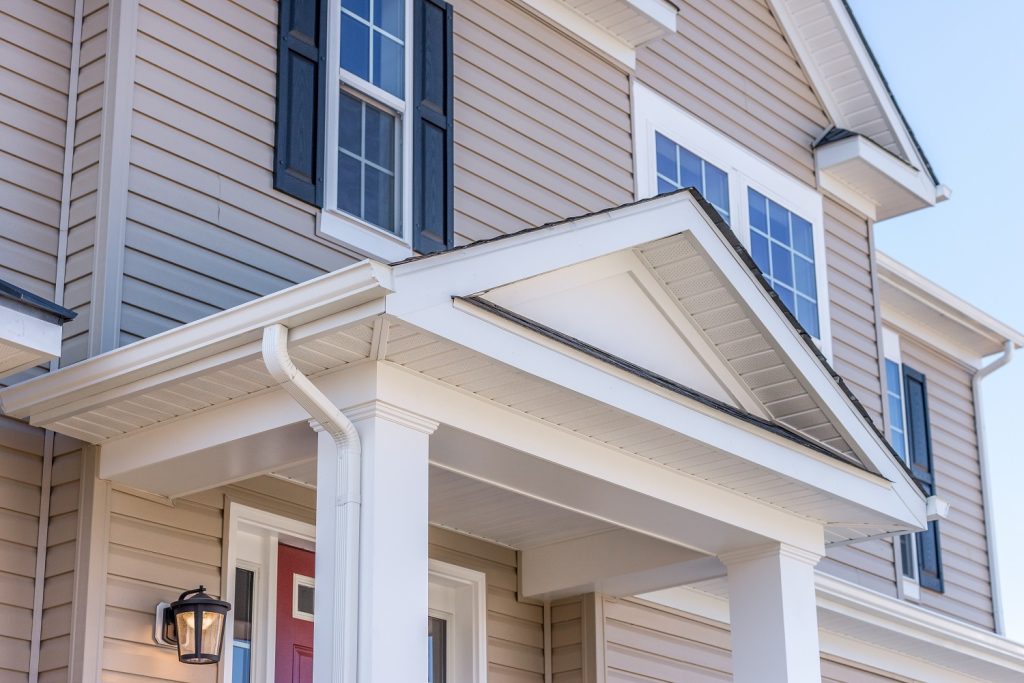
How Long Does Vinyl Siding Last?
The lifespan of vinyl siding depends on various factors, including the quality of the material, climate conditions, and maintenance. Most plastic siding will last between 20 and 40 years. Proper installation and regular maintenance can help extend the lifespan of your vinyl siding.
Can Vinyl Siding Be Painted?
Yes, vinyl siding can be painted. However, it is important to note that painting vinyl siding may void the manufacturer’s warranty. Before painting your vinyl siding, consult with a professional painter to ensure proper surface preparation and priming.
How to Cut Vinyl Siding?
Vinyl siding can be cut using a power saw or a vinyl siding cutter. Measure the desired length of the siding panel, mark the cut line, and carefully cut the panel using the appropriate tool. Be sure to wear safety goggles and follow the manufacturer’s instructions for the tool you are using.
How to Remove Vinyl Siding?
To remove vinyl siding, start at the bottom of the wall and gently lift up on the panel to release it from the J-channel or starter strip. Slide the panel horizontally to remove it from the wall. Take care not to damage the surrounding panels or the underlying sheathing. If you are unsure about removing vinyl siding, it is recommended to consult with a professional.
Conclusion
Vinyl siding offers numerous benefits, including low maintenance requirements, durability, cost-effectiveness, and versatility in design. However, it is essential to consider the potential drawbacks, such as environmental impact, limited lifespan, and color fading. By understanding the pros and cons of vinyl siding, you can make an informed decision for your home.
If you choose to install vinyl siding, proper installation, and regular maintenance are crucial to ensuring its longevity and performance. Whether you decide to install vinyl siding yourself or hire a professional, following the recommended installation techniques and maintenance guidelines will help you maximize your investment.
Remember to consult experts, such as professional siding contractors and painters, for guidance and assistance. With proper installation, maintenance, and care, vinyl siding can enhance the exterior of your home and provide long-lasting protection.
Entrust Your Home to Rhino Siding & Window Replacement
At Rhino Siding & Window Replacement, we know every home has a unique story and individual needs. With a stellar reputation forged over years of dedicated service, we stand proudly as a symbol of quality, reliability, and customer satisfaction in siding installation and window replacement.